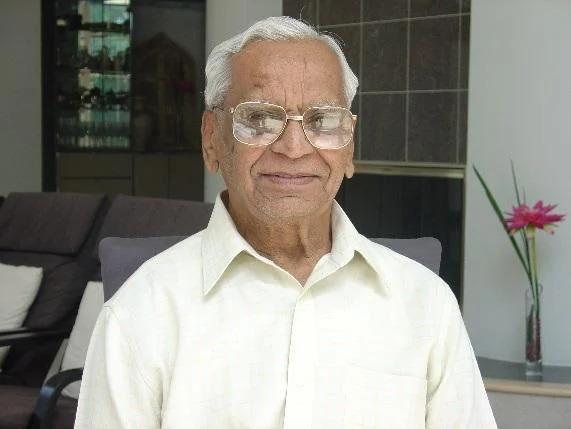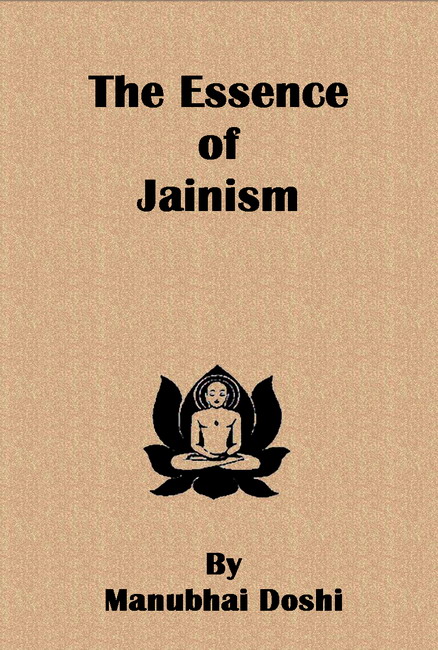It was stated in chapter 3 that Jiva, Ajiva, Punya, Paap, Asrava, Bandha, Samvar, Nirjara and Moksha are the nine fundamentals or Nav Tattva that everyone should know. Some description of Jiva has been given in the last chapter while dealing with Shaddraya. It would however be clear from the discussion so far that the knowledge of these fundamentals or of anything else is meant for knowing the Self. This Self is variously known as Jiva, Atma, Paramatma, Chaitanya, Brahma, consciousness, etc. Thus soul being the focal point and ultimate objective of all knowledge, it would be useful to discuss it here at some length.
A question may arise, ‘What is this soul after all?’ No one has ever seen it. Therefore the atheists, who refuse to believe in anything that cannot be perceived or grasped by senses, deny the existence of soul. Most of the scientists contribute to this view. They think that the body is a biochemical composition arising from a peculiar combination of productive genes of the parents. As long as the composition is active, it is said to be living organism; and when the activity comes to an end, it is considered to be dead. But science does not clarify what exactly makes it active and why does the activity come to an end. This is not the place to enter into pros and cons of the genetic theory. It is however, a fact that when a person dies, his heart, kidneys and other limbs may still be active but that body is unable to use them and therefore they cease to function. If however they are removed from that body in time, they can be transplanted in other body and they happen to function effectively in the new bod y. Does it not mean that there was some sort of invisible energy that was activating different limbs of the body, while it was alive? That energy happens to disappear at the time of death and the presence or loss of that energy makes the difference between life and death. Spiritual science calls that energy as soul.
There are infinite numbers of souls and every living body has a soul. It is invisible and has no form or shape. It cannot therefore be experienced by the senses. It is an element on its own and cannot be produced by any sort of combination or composition. As such it is stable and can never be decomposed. It is eternal and lasts forever. From time to time, worldly soul has been abiding in different organisms through which it manifests itself. It leaves the body of one organism when it is rendered useless and assumes other body suitable for its manifestation. This type of transmigration and new embodiment birth after birth has been going on since the time without beginning. Even though a particular body happens to be its temporary residence, soul tends to take it as its permanent abode and gets happy or unhappy depending upon the type of that body and its environments. Forgetful of its true nature, it aspires to get maximum happiness within the framework of given embodiment and surrounding situations. When one body becomes useless for fulfilling its purpose; it gains a new one in tune with its yearnings and degree of attachment during its earlier embodiment. This attachment results from delusion of soul about its true nature. Attachment gives rise to the disposition of craving for the desirables and of aversion for the undesirables. These craving and aversion are the causes of the bondage of Karmas that have been described in earlier chapters.
Every living being longs to be happy. The deluded sense of being one with the body however causes soul to feel happy or unhappy depending upon the conditions obtained as consequence of its previous Karmas. Our ancient Seers have dwelt deep in search of true happiness. They tried to explore the Self by raising the question ‘Koham’, which means ‘Who am I’. The appropriate answer that they could obtain was ‘Soham’ which means that I am that (soul). They could also perceive that the ‘I’ or the true Self is the source of true happiness and abode of perfect bliss. They realized that the lifeless matter does not have the property to make any one happy or unhappy and that happiness is the inherent property of soul.
We however do not experience the lasting happiness, because we do not realize the true properties of soul. After thoroughly exploring the nature of soul, the Seers have concluded that the principal property of soul that distinguishes it from lifeless matter, is knowability or capability of being aware. None of the five lifeless substances that we have described in the last chapter possesses that property. This property can enable soul to observe and know anything and everything. Scriptures have described this as Upayoga Lakshano Jivo. It means that knowability is the characteristic of soul. That attribute is inseparable from consciousness and therefore forms its basic property. As such, soul should simply stay aware of any given situation without any way reacting to it, because none of the situations really belongs to it. This would generate the sense of detachment; and absence of attachment to any extraneous influence can enable soul to abide forever in bliss which is beyond description. No wonder that the Seers, while describing the properties of soul, have preferred to call the same as indescribable.
To sum up, soul is pure consciousness. Infinite awareness and eternal bliss are its principal properties. Sanskrit words for eternity, consciousness and bliss are respectively Sat, Chit and Ananda. Therefore perfected soul is variously known as Sacchidananda, Chidanand or Sahajanand. Negatively speaking, it is intangible, invisible, colorless, odorless, tasteless, formless and shapeless. It is therefore described in the scriptures by Neti, Neti (Not this, not that). It is beyond the reach of senses and min d. It can however be experienced by dwelling deep within oneself.
Vaidic and other schools of thought consider soul as immutable. Jainism disagrees. It believes in changing states of soul which are known as its Paryayas. On the basis of two major Paryayas souls are categorized as worldly souls and liberated ones. Depending upon the sense organs that they possess, five categories of worldly souls have been described in the last chapter. Of these, Akendriyas are further classified in five sub-categories. They are known as Prithwikaya or earthly bodies, Apkaya or aquatic bodies, Teukaya or fire bodies, Vaukaya or gaseous bodies and Vanaspatikaya or plant life. These five sub-categories are collectively known as Sthavar meaning immobile. Remaining embodied souls are known as Trasa meaning mobile, because those that can move in face of danger are treated as Trasa and others as Sthavar. Sometimes, those five categories of Sthavar together with Trasa category are mentioned as six major categories and are known as Chhakaya Jiva.
Description of Ajiva and of its five categories has been given in the last chapter. Jiva and these five Ajivas are not any way dependent on one another. Each of these six substances has potentialities to undergo changes in its own states. Other substances however play the role of being instrumental in effecting those changes. For instance, Dharmastikaya, Adharmastikaya, Akash and Kaal play the role of being instrumental in location-wise and time-wise changes. Worldly soul does not try to identify itself with these four substances. It therefore hardly has any misunderstanding or delusion in such respect and views the role of those four Ajivas more or less dispassionately. Role of Pudgal on Jiva and of Jiva on Pudgal has however been the source of lot of misunderstanding. Worldly soul does not realize that its embodiment and all its surroundings have resulted from its past Karmas. It tends to identify itself with all those situations ignoring the fact that they are ephemeral. This has been the root cause of its continuing bondage of Karma and resulting transmigration. The discussion of Nav Tattvas has been undertaken for analyzing the state of worldly soul and the factors that inhibit and those that help in attaining liberation. Therefore Pudgal and particularly Karma Pudgal would be attracting our major attention in the subsequent chapters.
 Manubhai Doshi
Manubhai Doshi
